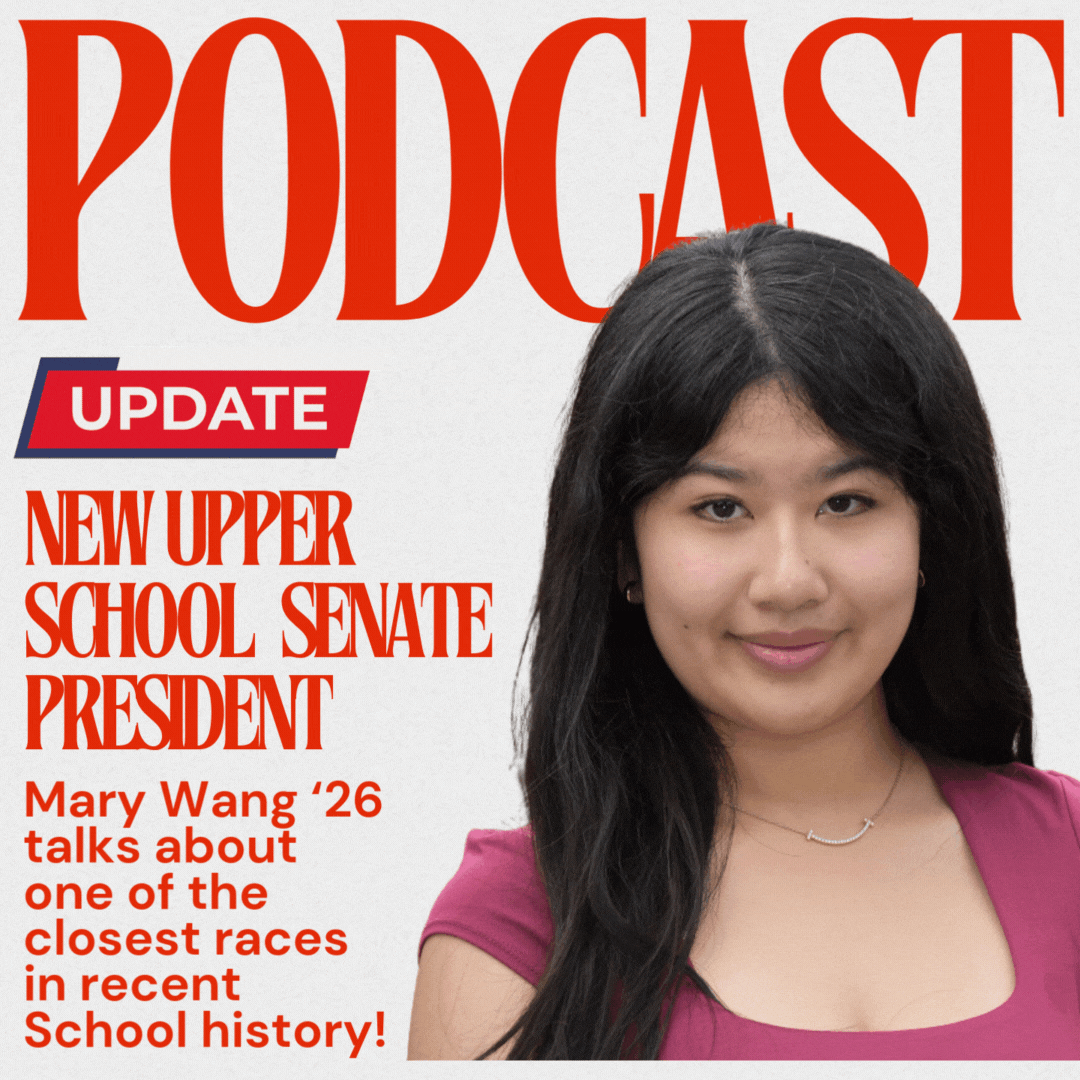Newsmakers’ fourth installment presents David Carney, a renowned political strategist and public relations expert. Currently, Carney is the CEO and President of Norway Hill Associates, a political consultancy, and a member of the Politico CAUCUS of early-state insiders that gives weekly insights on the state of the presidential campaign. Carney served as a special assistant to President George H. W. Bush, Deputy Executive Director of the National Republican Senatorial Committee, and longtime chief advisor to Texas Governor and presidential candidate Rick Perry.
Carney discusses general political strategy and the approaching presidential primaries, expanding on Newsmakers’ last installment, Renee Plummer on Republican Politics.
Carney on General Tactics
The job of any campaign, political, commercial, charitable or otherwise, is always to persuade people.
But most persuasion, Carney says, occurs through social networks: groups of roughly twelve friends at work, in school, online, or in any other place people who influence each other interact. Usually, each individual has a “speciality” like business, real estate, or baseball—a topic he knows more about than the rest of the group does.
More often than not, someone in a network knows about politics, and that specialist holds tremendous sway over the rest of the group’s political views. “For example,” Carney says, “if the politics expert tells the group Hillary Clinton has real problems, the rest of them may not know what he is talking about, but they are going to agree with him because it is the socially acceptable thing to do.”
Political campaigns use this to their advantage. They try to convince the political mavens to say either positive things about them or negative things about the competition. Moreover, since they know that a third of the electorate votes Republican and a third votes Democrat automatically, they know they can win elections by persuading the political “specialists” among the remaining third of voters. In other words, campaigns, unable to penetrate the other side’s core supporters, pitch only to the uncommitted.
In larger elections, the focus is tighter still. Campaigns pitch to the even more undecided middle 15% of the already non-automatic third. Seems complicated enough…but there’s more.
To gain the support of the political mavens of each network, campaigns need something to tell them: a message. The best messages are narratives, easy-to-follow stories with obvious conclusions.
Commercial advertisers do this better than anyone else.
Take this Snickers commercial as an example.
A football coach is acting uncharacteristically. He seems quirky and out of place. Then he eats a Snickers and turns into what a football coach “should” look like–tough, wearing a team jacket, and pumping up the players.
The narrative is clear: Hunger stands in your way. A Snickers bar crunches your hunger in a manly way. Next time you feel hungry, buy a Snickers.
At the highest levels, many political narratives follow the same structure as commercial narratives. Presidents Reagan, Clinton, and Obama have all invoked something along the lines of, “When I took office, my predecessor had left the economy in bad shape. But I fixed it, and now the economy is in good shape.” Both narratives are simple and compelling; good things, Snickers and presidents, fix problems.
A persuasive narrative appeals to voters’ emotions. The Snickers commercial ignores the logic for buying a Snickers; advertisers chose a make-believe story over an argumentative paragraph on Snickers’ cost and convenience relative to consumer alternatives. Why? In commercial and political advertising alike—it’s the emotional appeals that count.
“No one votes off, much less reads, a 12-point policy plan,” Carney says. “Nobody cares about just facts. You need to combine the visual and the emotional with your best selling points.”
In other words, values, principles, and morals, not policy jargon, motivate voters. Drew Westen, a political science professor at Emory, detailed this now-widely accepted notion in his book, The Political Brain.
Strong narratives provide an inevitable comparison, contrasting a positive emotional appeal with a negative one. The narratives of Presidents Reagan, Clinton, and Obama contained either a subtle reminder or an outright attack—depending on the phrasing at the time—of the opposing party’s previous president. Carney says campaigns should embrace such distinctions as long as they are consistent with the campaign’s message.
Policy plans, while they do not excite voters, help draw those distinctions. Policy backs up a campaign’s larger narrative, and helps defend it from attacks, Carney says. Policy is examined closely by the media who use it to shape a candidate’s image, particularly in close races. Without it, candidates invite attacks that they are illegitimate, hypocritical, or all-talk-and-no-action.
The media judge policy by its position on the ideological spectrum, or its distance from the party platform. For instance, candidates are labeled far left if their policies are closer to the edge of the ideological spectrum than the official Democratic Party’s.
“There is no GOP and there is no Democratic Party,” Carney says. “They are legal entities. Parties are what the people involved in the parties are—no candidate feels bound to run on the platform. It’s a coalition, and it moves every election.”
Often, campaigns use polling data or focus groups to help them write policy. They want their positions to align as close as possible with electorate’s. So pollsters inquire about three areas: people’s positions on the issues, the relative importance of the issues, and which “persuasion tactics” are most effective on them.
Carney urges caution when interpreting polls. Polls can be inaccurate. For example, a 2008 Gallup poll asked voters if they supported a ban on abortion after 20 weeks. Sixty-one percent said they did. In a separate poll, Gallup asked respondents if they supported a ban on abortion after five months. Roughly 75% said they did—same length of time, same sample size, but different wording changed people’s opinions.
Even if voters disagree with a few policies, those policies may not be their priorities at the ballot box. For instance, candidates often draw distinctions on abortion, and that tempts the opposition to shift their position. Abortion, though, is the deciding issue for only two percent of the electorate, a number too small to even consider a flip-flop.
Further, when candidates lie about their beliefs to match the polling data, it catches up with them. “The hardest part about lying is remembering your lies. And then the whole message falls apart when you get asked about it,” Carney says. “If people trust you, people will vote for you,” Carney says, “even if they do not agree with all of your proposals.”
Hence, more often than not, a campaign’s narrative is the make-or-break factor. “The biggest critique of modern politics is that people think you need to run to the right in primaries and then move to the middle,” Carney says. “No. You need to have a set of principles you stand by all the time. You are not always going to talk about them, but the idea that you can subtly shift your position is nuts.”
Carney on GOP’s Challenges
The Republican presidential field will face two main challenges as they seek a winning narrative.
First, candidates must consider the country’s long-term demographic trends. Minorities are becoming a larger percentage of the population. In the past, GOP nominees have suffered weak support from minorities, most important of whom are Latinos, a large and fast growing segment of the population. In addition, the party’s social positions are increasingly unpopular, particularly among young people. In total, older, white voters are a disproportionate piece of the party’s electorate.
However, the extent of this challenge remains unknown. While Latino support has lagged in past presidential elections, quite a few Republican governors have enjoyed solid backing from minority communities. Millennials’ left-leaning social views have also come hand-in-hand with conservative fiscal policy and a fundamental distrust of big institutions—both positions that align more closely with the Republican Party’s.
Left-leaning media have predicted that to attract more Latinos and millennials, the GOP will shift its positions on immigration, gay marriage, and perhaps abortion.
Carney sees the party’s gap with Latinos and millennials differently—as a false premise, of sorts. “As more Hispanics and more millennials get involved, the party will change along with them—there is not a voter in America who has ever read the party platform,” he says. “At the same time, candidates need to be clear that xenophobic and racist beliefs don’t speak to our values.” In addition, polls show the economy, not immigration, is Latino voters’ number-one issue.
In Newsmakers’ last installment, Renee Plummer said the media itself has created this predicament by preventing minorities, women, and young people from entering the party.
While considering demographics for the long term, the party’s candidates face a second challenge; the intersection of messaging, outreach, and voter turnout.
Essentially, the Republican Party has four coalitions; the establishment makes up just under one half of party, while Tea Party, evangelical, and libertarian voters make up 10-30 percent apiece. However, those smaller factions, Carney adds, show up at the ballot box much more consistently than establishment voters.
Indeed, voter turnout is important. Ever since Yale professor Donald Green, in 2004, brought to light the importance of voter turnout in his book Get Out the Vote!, campaigns have put it atop their to-do lists. Carney, on a flight to Texas for Governor Perry’s reelection bid, read Green’s book and decided to do the same. Through steady grassroots outreach, Carney and his team focused on gaining committed supporters to increase turnout. It worked.
Obama’s 2012 campaign, adding social media and advanced data analytics, confirmed this notion; a few unexpected percentage points of turnout in Cleveland and Milwaukee made all the difference.
“The media tends to take election wins and say you won because of this [big-picture ideology or policy], but really, it’s just a few points here and there,” Carney says. “It’s marginal. You still need the basic fundamentals—good candidate, good message, but these are the incremental things to leverage your success.”
While Tea Party, evangelical, and libertarian candidates have passion on their side, strong turnout in itself is not enough. Winning requires outreach—a good message and the means to spread it to a wider swath of the electorate.
A good message is one that brings people in. Take Obama’s 2008 campaign. “Obama ran an inclusive campaign—hope, change all that stuff,” Carney says. “Everyone bought into that message because it meant whatever you wanted it to. It was good strategy.” Instead of partisan sniping, Obama embraced do-no-wrong, values-based, emotional appeals.
And Obama had the means to spread his message, too. His use of social media, the newest outreach tool, and microtargeting was a step ahead of the game. His campaign identified key voters, figured out the most effective ways to persuade them, and correspondingly built extensive ground operations. In fact, following his 2012 race, political campaigns are beginning to cross voters’ online data with commercial retailers’ formulas to spur better turnout.
But social media have limitations. “Social-media audiences are very insular,” Carney says. “There is very liberal stuff out there, and very conservative stuff. There is not a lot of middle ground, establishment media.” In addition, campaigns are still in the early stages of social media—everyone sees potential, but it’s relatively unexplored. Other outreach mediums—TV, radio, and door-to-door—will continue to be significant.
The intersection of messaging, outreach, and turnout is busy, indeed. How will campaigns utilize turnout strategies, messaging tactics, and new technologies? The small but passionate coalitions will need to use those tools to build broader support. The establishment will need to pump up its voters. In providing a forum for candidates to pitch to activists, Plummer asks herself those questions every day.
In the end, Carney sees the establishment coming out on top. “The establishment candidate,” he says,“ who can motivate the middle and not alienate these two other coalitions will be successful.”
Carney on 2016 Candidates
Carney’s thoughts on specific presidential candidates, and a few other dynamics in the race:
Jeb Bush: “I know George and Jeb both, and they are nothing alike. Personality, temperament, intellectual curiosity—they are polar opposites. It’s hard to believe they are from the same parents they are so different . . . .What Jeb has done in NH so far has been great. He has done open events, taken all comers, but the real question is: can he spend enough time here that people forget he’s a Bush, and just listen to his ideas. ”
Scott Walker: “Walker has a great life story to tell and record of success. His only question is whether he can withstand the national media—they are afraid of Scott Walker.
Marco Rubio: “The national media is scared of Rubio. Fresh, new, generational, he does not have a lot of baggage. They are going to grill him. Nonetheless, he will be a player, no question about it . . . . Rubio could be the new Obama, although he is much more substantive than Obama ever was.“
Carly Fiorina: “And then there is a dark horse candidate like Carly Fiorina. If she’s in the debate, she will distinguish herself just by being on the stage. And, if she can withstand the same gauntlet and raise enough money to be relevant, she could really impact the race.”
Rick Perry: “Perry is a unique individual. He loves to campaign and is very good at it. He has bold ideas and the audacity to follow through.”
“New” candidates: “The advantages of candidates like Marco Rubio, Scott Walker, Ben Carson, and Carly Fiorina are they have no record. You are not going to find any dirt on them that would damage their authenticity.”
Primaries: “There will be a conservative who is contending. Whether it’s Ted Cruz, Rand Paul or Huckabee, there will be a conservative that emerges from the early states that will be contender against an establishment candidate.”
The Clintons: “Bill Clinton’s people skills are a class above everyone else’s. When you talk to Bill Clinton, it feels like he only cares about you. It is very difficult to be at that level, but you need to be fluid . . . . Hillary tries to be like her husband. But they are nothing alike. Hillary is the stereotypical political person. Her campaign is controlled and calculated. If Hillary started talking more openly, the political class would be less critical of her.”
Handling the Media: “If you answer questions every day, there is risk of slipping up. But eventually it becomes not a big deal. When you answer questions once a month, every word is scrutinized. And that doesn’t affect real voters directly, but it does affect how the political class frames you. That trickles down to real voters, for sure.”























































